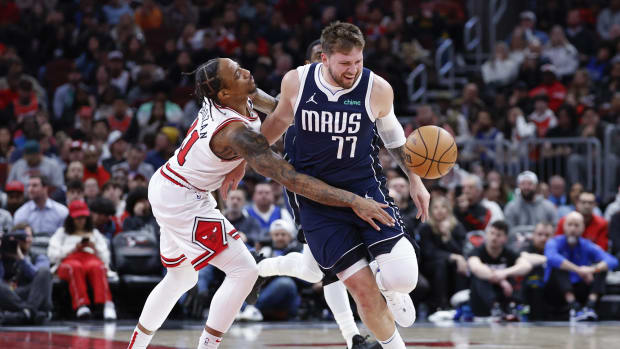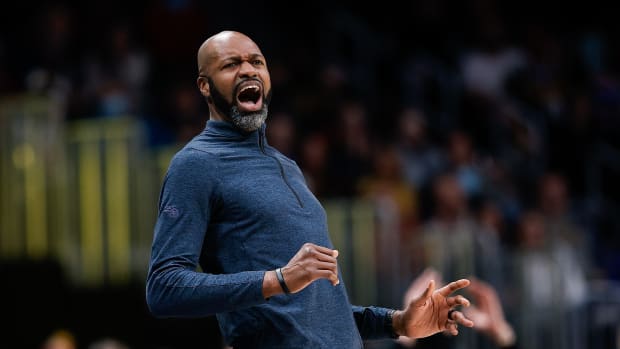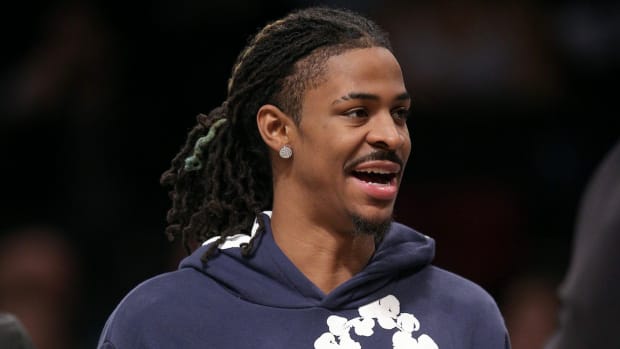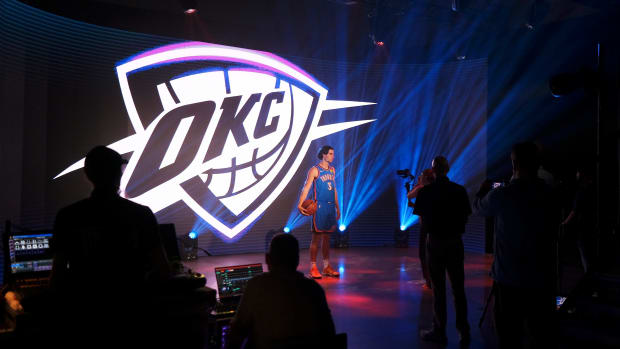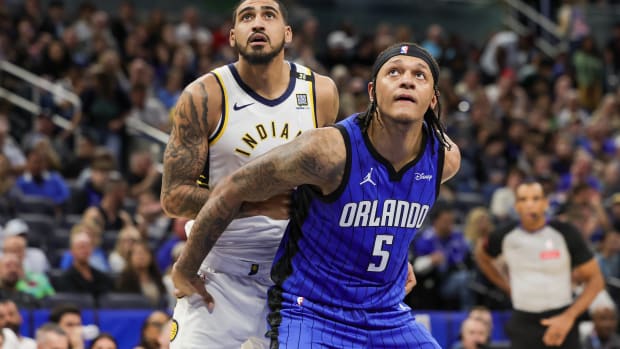The Fundamentals: How DeMar DeRozan's development is coming to fruition
Toronto's DeMar DeRozan has come a long way over the past two seasons. (Garrett W. Ellwood/NBAE via Getty Images)
The Raptors may not have a superstar, but they do have DeMar DeRozan.
For five years DeRozan has stewed in Toronto, pushing along his career arc in slow churns for a losing team. But this is the season it all pays off. DeRozan's first All-Star berth will likely coincide with his first playoff appearance, a joint development indicative of real progress. The ninth pick in the 2009 draft hasn't simply emerged as the kind of player who can average 22.9 points per game (or more than 32, as he has over his last three games), but the kind who can pull off that production without glaring detriment.
When framed by a certain tack, volume scoring can be a virtue. But those particulars escaped DeRozan even as recently as last season, when his time on the floor -- and then-career-best scoring marks -- came with a four-point drop in Toronto's offensive efficiency. Such is the cost of experimentation. The Raptors were able to put DeRozan in all sorts of offensive roles and situations last season, to the point that he spent much of the year out of his comfort zone. He still is, in fact, as the broadening of his game has urged a broadening of his responsibilities. Toronto asks a lot of DeRozan, and so far he's responded with genuine growth.
This is player development in action. Through repetition on repetition on repetition, new skills and instincts are becoming hard-wired. Much of the improvement now visible has been seasons in the making, as Raptors coach Dwane Casey gave DeRozan freedom to build his game. He trusted the developing guard through growing pains, running his offense to feed DeRozan on the block or put him in position to create from the wing. DeRozan's passivity with the ball slowly dissipated, and over time the Raptors began looking to the 24-year-old as a fallback option when set plays broke down. DeRozan grew into that role simply by having it expected of him.
DOLLINGER: Raptors at No. 12 in latest NBA Power Rankings
As a viable scorer in years past, DeRozan had sustained on a diet of curling mid-range jumpers and active cuts. Whatever utility he had was undermined by his clear reliance on Toronto's playmakers. For a time, DeRozan was useful as long as he wasn't too prominent. He still hasn't completely cleared that hurdle, but DeRozan is already far more comfortable in creating off the dribble than he was before.
His handle has grown increasingly steady, and this season in particular DeRozan has looked to make quick drives into the teeth of the defense when catching an opponent off balance. Toronto loves to have DeRozan receive a dribble hand-off before transitioning into an immediate pick-and-roll, challenging opponents to keep up with the offense's side-to-side movement. DeRozan takes further advantage by often working away from the screen -- a smart play that forces the defense to make yet another slide to account for his reversal.
There's a quiet confidence in those drives that simply wasn't there before -- the kind hardened by practical experience and manifest through DeRozan's willingness to push deeper into the paint and the structure of the defense. He's always been a gifted player, but this is a cultivated talent brought on by opportunity and DeRozan's own diligence.
Some of that growth is only possible because of how far DeRozan has come physically. It's taken time for him to transform from a lanky athlete into a more durable driver. Where he might have settled for a pull-up jumper previously, he can now power through, fighting off bumps and hand checks to get closer to the rim. As a result, DeRozan puts himself in even better position to draw fouls on overcompensating defenders. Only nine players average more free-throw attempts per minute, which in DeRozan's case helps redeem underwhelming shooting percentages (43.4 from the field and 30.1 from three-point range).
GIVE AND GO: Debating NBA's stretch-run storylines
The ability to get to the free-throw line consistently has widened DeRozan's effectiveness as a high-usage player. Toronto needs DeRozan to create because he's the most capable of assisting point guards Kyle Lowry and Greivis Vasquez in manufacturing basic offense. If not him, it would only be another player less willing or less skilled assuming some portion of that responsibility, neither of which is all that pleasant an alternative. Instead, DeRozan acts as the funnel. He posts up. He runs catch-and-shoot patterns. He initiates pick-and-rolls. He fills gaps and he takes shots, with a usage rate that ranks between Stephen Curry and James Harden. This is the role that the Raptors need DeRozan to play, and he's responded by putting up a huge quantity of shots (fourth most in the NBA) at tolerable efficiency -- a victory for a player still fulfilling his potential.
DeRozan is clearly doing too much, but that's very much the point. Two seasons ago, DeRozan was a specialized scorer on the second-worst offens in the NBA, unprepared to contribute outside his narrow lane of production. Since then, he's stretched his skill set to approximate Toronto's needs. DeRozan very evidently built up his lower body, which gave him a base to work in the post. He refined his ball handling and became comfortable enough to double his pick-and-roll usage compared to the 2011-12 season, according to Synergy Sports. He grew to attack off the dribble more confidently, slink by multiple defenders in the paint and help sustain himself with his drives.
































